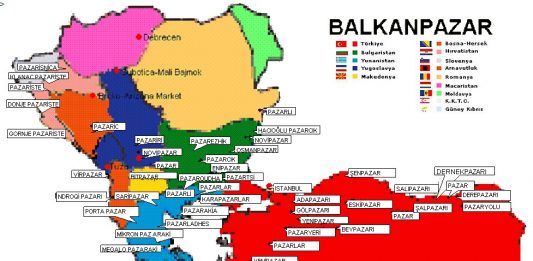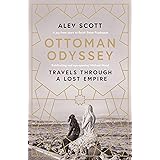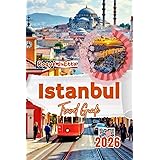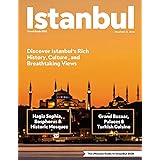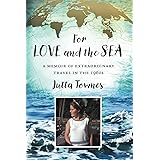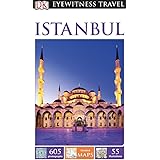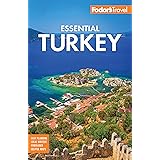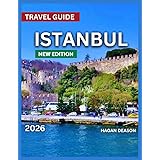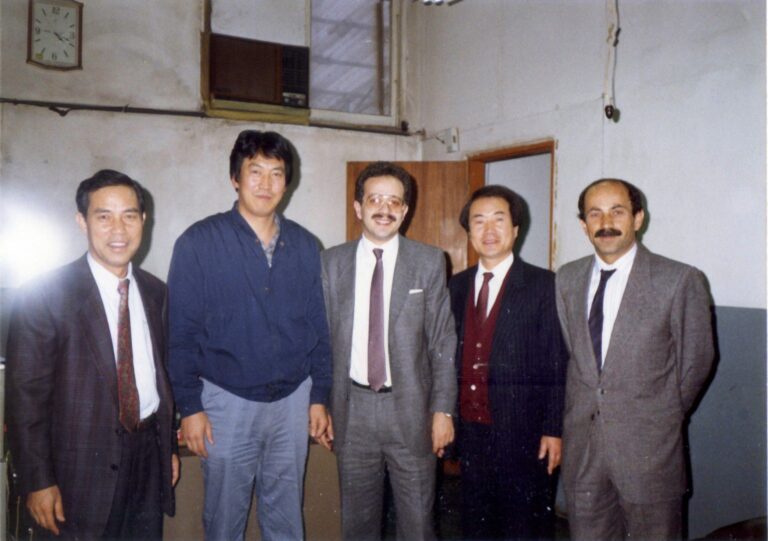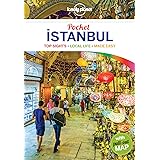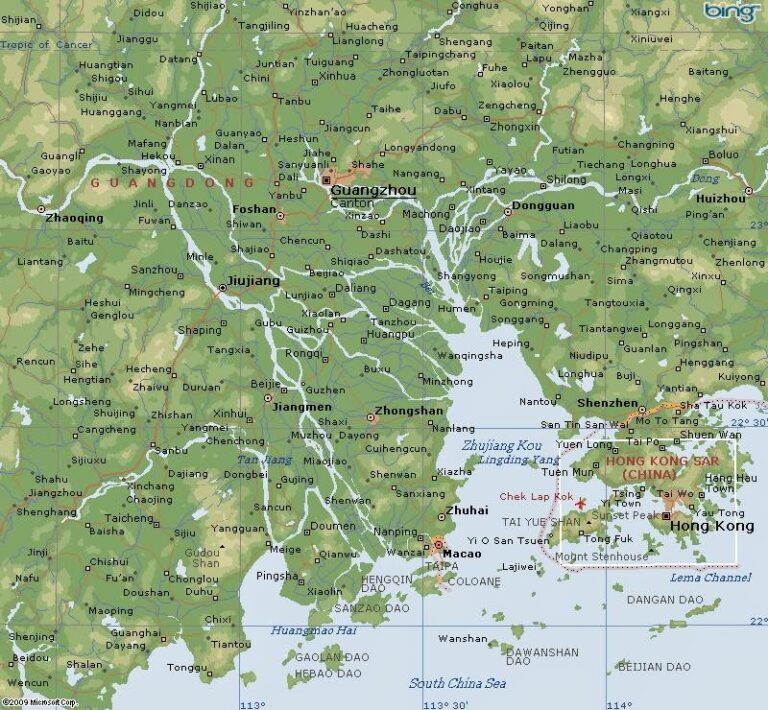[email protected]
leventagaoglu.blogspot.com.tr
www.balkanpazar.org
SUMMARY
1. While the final revisions of the article were made, the UK left the EU as a result of the referendum. “From Eastern Europe to East Turkestan” Turkey-based İktisadi Birlik has come before us as a century-old opportunity.
2. As a global export powerhouse, the Canton region in the south of China carries many clues in terms of our Turkey-based regional division of labor proposal.
3. Turkey has the similar advantage of living together with the nations in its region for centuries; In the event that a similar economic dynamism is created within the understanding of a network, our country will also be able to become a regional/global center of attraction.
4. Considering the example of the Canton model in the south of China for Turkey, Istanbul and the Thrace region in its hinterland have similar connotations.
5. There are 70 countries (markets) in 8 sub-regions in the 5-hour flight region where Turkey is the Center. Our Free Trade Area has been formed with 41 of these markets.
6. Diversity should be ensured in the products subject to the export of industrial sectors. The cooperation opportunities of the countries of the region in a very wide geography have the potential to turn the competition into a solution partnership in many products that seem to be competing with each other.
7. Turkey’s share in the foreign trade of the Balkan countries is only 1.2%. This share shows that Turkey, which has been in the region for 650 years since 1352 and is the largest economy in the Balkans, does not actually exist in the region.
8. Although there is no Customs Union agreement with Turkestan markets, EKIT, Africa, OIC, Gulf IB (GCC), the fact that our market share (import) is higher than our EU market share makes it necessary to question the Customs Union with the EU. GB is the means of occupation of the Turkish market in favor of Europe. The 20-year EU-GB process has made Turkey the open market of Europe.
9. The measurement of the current situation in exports should be done with the right methods. The criterion to be taken as a basis while evaluating the export is not the value or quantity of the products sold to the market in question. The measure is our share of the total import value of that market; is our percentage in its value; is our share. Measures are not our sales; is the share we get from the market of the buyer country. South Korea, with a population of 50 million, has increased its exports to over 500 billion dollars with this market share strategy. Hyundai, Samsung, LG etc. global brands and companies are the results of this model.
10. The “Foreign Trade Capital Companies” model of the late Turgut Özal, the visionary founder of İkitelli OSB, should be revived specifically for the İOSB, and the markets of 119 countries, to which our global brand THY flies, should be targeted with the target of “İkitelli Organized Market: The World”.
ENTRANCE
As a result of globalization, the development axis of economies is shifting again; It is shifting from the Atlantic (Europe) to the Pacific (Asia). This development presents a great opportunity for Turkey; TURKEY-CENTERED REGIONAL COOPERATION AND DIVISION.
The SILK ROAD, which has been the historical vein of trade for thousands of years, is reviving. Hosting this legendary road stretching from the Great Wall of China to Rumelia, Turkey and China have taken their places among the 10 growing economies of the world. Today, Turkey and China play a leading role in the integration of common commercial space and free (duty-free) trade in their regions.
Today, Turkey and China models are emphasized in the global economy. Turkey and China models; It differs from each other in terms of both the forms of competition in the markets and the democratic (Turkey) and authoritarian monocentricity (China).
How can Turkey in the west of Asia be such a center while China in eastern Asia is a global center of attraction? The answer lies in the regional cooperation model.
The presence of China in the BRIC group on Emerging Economies and Turkey in the MINT group clearly shows the direction of development.
CHINA MODEL
As a result of the regionalization trends in trade accelerated by globalization, the China-centered region in East Asia creates a division of labor and synergy with its neighbors within the framework of regional cooperation;
These;
- North East Asia (Japan, Korea),
- Greater China (China, Hong Kong, Taiwan) and
- South East Asia (Indonesia, Malaysia, Thailand, Vietnam, Philippines, Singapore, Burma, Cambodia, Laos).
While exports from the region are mostly towards the US market, the key country in this cooperation is China. In the next ten years, China is on the way to create the AFTA-Asian Free Trade Area together with the countries in the mentioned region.
Map 1: Pearl River Delta, Canton Region, China
As a global export powerhouse, the Canton region in the south of China carries many clues in terms of our Turkey-based regional division of labor proposal.
The Pearl River delta in the Canton region of China is a global production base. Numerous foreign-invested factories for the consumer industry create an incredible traffic of people and goods here. Containers, sea buses, landing and departing planes, trucks display dazzling dynamism.
Map 2: Canton Region, China
China has taken such a regional leadership initiative in its region. Especially, with the Bill Clinton administration, the concept of Greater China has started to be used. The Chinese are also reaping the fruits of this with their economy that has been growing 7-8% for 25 years and continuously.
Since the Clinton administration, China (more precisely, Greater China = (China+Hong Kong+Taiwan) has taken the lead among the world’s 10 emerging economies.
Source: http://leventagaoglu.blogspot.com.tr/2014/09/port-city-network-in-east-and-south.html
Map 3: Regionalization in Asia-Pacific – The “New Mediterranean” Economic Corridor
The Chinese speaking the same language from Taiwan, Hong Kong, People’s Republic of China and overseas (USA, England, Canada, Thailand, Indonesia, Malaysia, Philippines, Australia, New Zealand) create a great economic dynamism in a network understanding.
The Chinese Business Network is one of the strongest networks in the world and is the real force behind China’s rapid development.
REGIONAL DEPARTMENT OF LABOR PROPOSITION centered in Turkey
Turkey has a similar advantage of living together with the nations in its region for centuries; In the event that a similar economic dynamism is created within the understanding of a network, our country will also be able to become a regional/global center of attraction.
In economic terms;
- EU/GB,
- EKIT (ECO),
- BSEC
- D8
- OIC/COMCEC
Our connections and our position within the major institutions of the Western World also reinforce our role as a regional power.
Considering the example of the Canton model in the south of China for Turkey, Istanbul and the Thrace region in its hinterland have similar connotations. Area;
· Renovated factories in new centers (Çerkezköy, Çorlu, İkitelli) in the last 10 years,
· Opportunities created by Istanbul in terms of contact with the outside world,
· Transportation opportunities and
· Progress towards becoming a fashion/fair center,
· Not only Turkey but also Turkey Its characteristic of being the historical metropolis and capital of empires of a very large region, including .

Map 4: Thrace Map
All these factors; When evaluated together, it has features that will enable us to be hopeful for the creation of a similar dynamism.
If Turkey implements a policy of strengthening by creating regional division of labor/cooperation and an economic union in the region, of course, it can reap the benefits of this like China and become the dynamo of regionalization and development in its region with its high growth rates.
The regionalization dynamism will also bring the advantages of being both a forwarding country and a forwarded country in industrial sectors, especially in subcontracting and outward processing directed by German and Italian companies.
Turkey has a similar linguistic and cultural advantage in its region, which is strengthened by historical and cultural ties; When Turks in EU countries and the USA are also included, if a similar economic dynamism is created within a network understanding, Turkish industry will also become a center of attraction.
As a result of the evaluation of regional cooperation opportunities;
• We can become the largest supplier of industries in the region.
• We can be among the top 5 countries in the region, especially in industrial production.
EXPORT VISION: IMPORTANCE OF REGIONAL MARKETS
Another critical issue is; How much of a key role commerce plays in this regard. From 1960 to 1980, the British Foreign Office’s number one commandment to all British Embassies around the world was: “Improve British business!” it happened. Today, British world trade is “profitable”, its international sales outnumbering its purchases. Turkish Industry is not open enough yet. Trade connections that will come with opening up will be able to carry the industrial sectors to new horizons. Trade connections will bring along the buyer connections that are active in sales channels, and may bring the increase in exports to target markets on the agenda.
From Hungary to Turkey, from the Black Sea to the Adriatic, and even, as some have suggested, to Russia, Central Asia and China, a regional (domestic) market is re-forming. From Debrecen in the far northeast of Hungary to Istanbul, the center of Euro-Asian trade, the outlines of a region different from the political and military border definitions of states begin to appear. For more than 25 years, old trade routes have re-emerged in the region, and finally, Istanbul, the backbone of Euro-Asian trade, has once again become the main commercial center of the region.
Centre; Based on the Atlantic, Turkey is in the “wing country” position.
When others are winged, they are locked into their goals.
When you become the center, you take wings to your own goal.
Centre; Based on Turkey, our country rises to the position of “winged country”.
In order to take off, we need to take wings; The maneuvering power on our wings will bring us to the target.
Our regional markets are our wings; Let’s increase our exports rapidly towards our regional markets so that we can gather strength in our wings.
Turkey’s regional areas have been blocked from 3 sides.
European Union (Germany); He blocked the Balkans.
Russia; It blocks Turkestan.
The USA, on the other hand, has been carrying out a comprehensive blockade in the Middle East region for years.
Despite these regional blockades that we are subject to;
- in the Caucasus region; Azerbaijan, Georgia (STA), Iran
- in the Turkestan region; Kazakhstan, Turkmenistan
- in the Balkans; Albania (STA), Macedonia (STA), Bosnia (STA), Kosovo, Serbia (STA), Montenegro (STA)
- in Africa; Somalia, Sudan, Morocco (STA), Tunisia (STA), Algeria, Mauritius (STA)
- in the Middle East; Qatar, Iraq, Palestine (STA), Israel (STA), Egypt (STA), Jordan (STA)
- North; Ukraine
- in the Mediterranean; TRNC
- In the Pacific : S. Korea (2013), Malaysia (2015), Singapore (STA) Chile (STA)
With the regional cooperation we have developed in the markets of a total of 29 countries, blockages coming from 3 directions (west, east, south) are tried to be eliminated.
Map 5: Five Sea Basins. Central Country of 70
Markets Our Free Trade Areas in Turkey (2016)
Regions Number of Markets Number of Free Markets
EURASIA
BALKANS 14 12
KAZAR/CAUCASIA 3 1
TURKISTAN 5
NORTH MARKETS 3
MIDDLE EASTERN/FREE CRESCENT&HICAZ 16 5
NORTH AFRICA/MAGREB 8 2
EUROPE
WEST EUROPE 15 15
EASTERN EUROPE 6 6
TOTAL 70 41
There are a total of 70 countries (markets) in 8 sub-regions in the 5-hour flight region where Turkey is the Center. Our Free Trade Area has been formed with 41 of these markets. The Western European and Balkan markets are where our free trade areas are most common. 21 of these areas are in Europe and 20 of them are in Eurasia.
TURKEY: CENTRAL COUNTRY OF THE FIVE SEA BASINS
All markets on the Turkey-based Regional Cooperation Map are within a 5-hour flight distance.
While technological developments in the field of communication and transportation have globalized trade, the political and ideological division that limited trade has also disappeared. So, for example, we now know what happened in Plovdiv. So, the answer to whether it is more efficient to export industrial products to San Francisco or Plovdiv has emerged spontaneously.
As a start;
· The industrial import and export data of neighboring countries, as well as Eastern European and Balkan countries, should be determined on the basis of products in their up-to-date form, and how much share our country gets from this trade should be expressed with statistics, and suggestions should be put forward on how we can increase our share.
· Now, without wasting any time, it is essential that we first make an inventory of what we sell to whom in the regional markets.
· After that, we should determine who buys what and what they need, and implement an export policy for the regional markets.
· Diversity should be ensured in the products subject to the export of industrial sectors. The cooperation opportunities of the countries of the region in a very wide geography have the potential to turn the competition into a solution partnership in many products that seem to be competing with each other.
· After determining the industrial products that we can sell but cannot sell, or that we sell less, in regional markets, we should make a country-by-country planning of the cooperation that we will develop in these markets. Because we know that to develop our trade with regional markets; In a sense, it may cause us to be evaluated not as a market of 80 million people, but as a much larger regional market.
· Turkish industrialism has to deal with regional markets and trade as a holistic project without wasting any time. After the division of cooperation and division of labor in industrial sectors with the countries of the region, it should be determined in which product and production stages and in what way the cooperation will be made. For example, Turkey’s share in the foreign trade of the Balkan countries is only 2.6%. This share shows that Turkey, which has been in the region for 650 years since 1352 and is the largest economy in the Balkans, does not actually exist in the region. (Source http://www.balkanpazar.org/dis_ticaret.asp)
· As a result of the specialization in the industrial production stages, the producers develop cooperation / division of labor among themselves, and by providing efficiency in resource use, they become not rivals but complements to each other. The aforementioned Win-Win model is best implemented by Italian industrialists. This model can be taken as an example by our industrialists.
BALKANPAZAR: Rumelia and Eastern Europe Expansion
Turkish is the common language of the Balkan countries. As the word BALKAN is of Turkish origin, the word PAZAR is a word of Turkish origin that is used in all Balkan languages such as Albanian, Bulgarian, Serbian, Hungarian, Romanian and Greek. In addition, the word market is reflected in the place names in the Balkans.
Ndrouqi Market in Albania; Pazaric in Bosnia and Herzegovina; Pazarcık, Tatarpazarcık, Novi Pazar, Osman Pazarı in Bulgaria; Skopski Market in Macedonia; Pazarlia in Romania; Novi Pazar, Virpazar in Yugoslavia; Pazariste in Croatia and Megalo Pazaraki in Greece are some of these place names.
In these countries, more than 40 place names in which the word market is mentioned show how important the market phenomenon is in the region and that a holistic market was created in the Balkans under the rule of Turks. (Source: http://balkanpazar.org/misyonumuz.asp )
The BSEC Black Sea Economic Cooperation project was developed by our 7th President, the late Turgut Özal.
Since the EU will disappear, the Rumelian opening will become essential. Rumelia; Eastern Europe and the whole of the Balkans were considered as the countries to the east of the Estonia-Bosnia vertical. There are Turks at both ends of this vertical. Turks exist both in Estonia and in Bosnia.
Map 6: Estonia-Bosnia line
When we say Balkanpazar and Hazarpazar, both are Turkish words that all partner countries understand.
Source: http://leventagaoglu.blogspot.com.tr/2015/09/turk-dusunce-tarihi-4-tefekkur.html
Map 7: Pazar Yerads in the Balkans and Anatolia
CASPIAN OPENING
The Caspian Region is a typical synthesis of the peoples of Eurasia. Adriatic-Black Sea-Caspian line; It is the reflection of the Balkans-Anatolia-Caucasus-Prenasia line in the seas.
As in the Rumeli expansion, “Caspian Pazar” is also pluralistic; In that sense, Armenia, Kazakhstan and Uzbekistan can also be added to the structure. Thus, the oasis of civilization will be understood in Transoxiana.
When we shift our economic border to the National Pact in the south, Mesopotamian civilization will enter into the same interaction.
As a result of the expansions of Rumelia and Caspian, all ancient eastern religions are Islam, Orthodoxy, Judaism; It will find its meaning in Istanbul, in the center of the world.
Caspian is also the reddening of China since the Tang dynasty in the past. The Whites reached the Far West in the Americas, landed on the Pacific coast and integrated the continent. The Chinese, on the other hand, could not go beyond Urumqi, and when they lost the Talas war in Kyrgyzstan, they could not land on the seashore to the Caspian and were locked in the land.
Caspian coast countries/regions:
1. Dagestan
2. Kalkumya
3. Azerbaijan
4. Russia
5. Astrakhan Oblast
6. Georgia
7. Armenia
8. Turkey
9. Kazakhstan
10. Turkmenistan
11. Iran
Source: http://leventagaoglu.blogspot.com.tr/2015/09/turk-dusunce-tarihi-4-tefekkur.html
Map 8: Caspian Market Countries
SILK ROAD
Silk Road: This line stretching from the Caspian Sea to the Pacific Ocean; It is the backbone of the Asian market.
With the completion of the High Speed Train (YHT) lines and the 3rd Istanbul Airport on this line, Turkey will get closer to these markets.
Map 9: Silk Road Markets
Silk Road; It will connect the cities of Istanbul-Ashgabat-Astana-Beijing-Shanghai. At the end of the next ten years, Asia’s GNP size will surpass that of the West.
TURKISTANPAZAR
Turkistan and Turkey’s 2013 growth rates:
5.8% Azerbaijan
· 6.0% Kazakhstan
· 10.5% Kyrgyzstan
· 7.4% Tajikistan
· 4.1% Turkey
· 10.2% Turkmenistan
· 8.0% Uzbekistan
Source: World Bank
Dominant countries in the import of Turkestan;
· Russia 27%
· China 25%
· Turkey 6%
· Germany 5%
· Korea 5%
Source: TradeMap
Conclusion:
– The development rates of Turkestan countries are at the same level as China. It is very high.
– The share we get from the trade of Turkestan countries is low.
– In a short time, China can overtake Russia by occupying the first place in Turkestan’s imports.
Fertile Crescent & Hejaz (Nile to Tigris) Markets:
Area; It covers a growing market like Egypt, a high-tech power like Israel, and oil-rich markets like Iraq, Saudi Arabia, Qatar and the UAE.
Map 10: Fertile Crescent Region
AFRICAN MARKETS
In the distribution of the world’s 10 most populated countries in 2015, Africa was represented only by Nigeria, in 2050 it will be represented by Nigeria, Congo, Ethiopia, and in 2100 by Nigeria, Congo, Tanzania, Ethiopia and Niger.
area of the African continent; It is equal to the sum of the area covered by the USA, China, India, Japan, Eastern Europe, Germany, England, Switzerland, Italy, France, Netherlands, Belgium, Spain, Portugal.
STRONG DIRECTIONS AND OPPORTUNITIES IN THE STRAITS REGION IN THE RUMELİ/THRACIAN PENINSULA:
OSB
Ikitelli
Cerkezkoy
Europe
Corlu
Sea Port/Roads/Canals
Canal Istanbul
Tekirdag
Ambarli
Caspian-Black Sea connection
Sea Passenger Transportation (IDO)
İstanbul(Yenikapı)
Bursa
Yalova
Büyükçekmece
Pendik Airport 3rd Airport Atatürk Airport Çorlu Edirne Tekirdağ
Highways/Bridges
TEM Highway 3rd Bridge
Highway
Ring Road
3rd Bridge
Çanakkale Bridge
OsmanGazi Bridge
Railroads
Beijing-London Train Line
High Speed Train (Ankara-Istanbul)
Marmaray
universities
Istanbul
Edirne
Kirklareli
Tekirdag
Canakkale TECHNOPARKS
Boğaziçi Technopark, Boğaziçi University
Istanbul Technopark, Avcılar Campus
ITU Arı Teknokent, Ayazağa
Trakya Technopark, Edirne
Yıldız Technopark, YTU, Davutpaşa
REGIONAL MARKETS MADE IN TURKEY
INTERCHANGE POINTS:
EURASIA:
Rumelia/Balkans/Eastern Europe,
Asia Minor,
Caucasus,
Turkestan
AFRASIA:
North Africa
Fertile Crescent
Hejaz/Gulf BALKANPAZAR
Bulgaria
Greece
Former Yugoslavia
Albania
Romania
Moldova
Eastern Europe
HAZARPAZAR
Turkey
Kazakhstan
Turkmenistan
Iran
Dagestan
Kalkumia
Azerbaijan
Russia
Astrakhan Oblast
Georgia
Armenia
TURKISTANPAZAR / SILK ROAD MARKETS
Uzbekistan
Kazakhstan
Turkmenistan
Kyrgyzstan
Tajikistan
Afghanistan
East Turkestan Autonomous Region
FABULOUS CRESCENT&HICAZ (FROM NILE TO DICLE)
Egypt
Israel
Palestine
Arabia
Kuwait
UAE
Qatar
Oman
Yemen
Bahrain
Syria
Jordan
Lebanon
Iraq
AFRICAN MARKETS
North Africa
East Africa
West Africa
South Africa
OUR REGIONAL INTEGRATION INITIATIVES (CURRENT)
EU-GB
BSEC
EKİT(ECO)
D8
OIC/COMCEC
DEVELOPING WORLD:
BRIC
Brazil
Russia
India
China
MINT
Mexico
Indonesia
Nigeria
Turkey
REGIONAL INTEGRATIONS WE ARE MEMBER OF:
EU:
Germany.Austria.Belgium.Bulgaria.Czech Republic.Denmark.Estonia.Finland.France.Greek Cyprus.Croatia.Netherlands.England.Ireland.Spain.Sweden.Italy.Latvia.Lithuania.Luxembourg.Hungary.Malta.Poland. .Romania.Slovakia.Slovenia.Greece. Note: Turkey is only a member of the Customs Union (GB).
BSEC:
Albania.Azerbaijan.Bulgaria.Armenia.Georgia.Moldova.Romania.Russia.Turkey.Ukraine.Greece.Serbia EKIT (ECO): Afghanistan.Azerbaijan.Iran.Kazakhstan.Kyrgyzstan.Pakistan.Tajikistan.Turkey.Turkmenistan.Uzbekistan.
D : Indonesia.Pakistan.Nigeria.Bengaldesh.Egypt.Iran.Turkey.Malaysia
OIC: Islamic Development Organization: It has 57 members. Afghanistan, Albania, Azerbaijan, Bahrain, Bangladesh, Benin, United Arab Emirates (UAE), Brunei, Burkina-Faso, Algeria, Djibouti, Chad, Indonesia, Morocco, Ivory Coast, Palestine, Gabon, Gambia, Guinea, Guinea Bissau, Guyana , Iraq, Iran, Cameroon, Qatar, Kazakhstan, Kyrgyzstan, Kornors, Kuwait, Libya, Lebanon, Maldives, Malaysia, Mali, Egypt, Mauritania, Mozambique, Niger, Nigeria, Uzbekistan, Pakistan, Senegal, Sierra Leone, Somalia, Sudan, Suriname, Saudi Arabia, Tajikistan, Togo, Tunisia, Turkey, Turkmenistan, Uganda, Oman, Jordan, Yemen, Syria
REGIONS AND MARKET SHARES Our
Market Shares in the Regions (2015; % )
1 TURKISTAN 45 3.56 7.9 EAST
2 NEIGHBORS 395.2 24.5 6.2
3 NORTH AFRICA 113.6 5.5 4.8 SOUTH
4 KAZAR 282.6 13.4 4.7 NORTH, EASTERN
5 fertile CRESCENT&HICAZ 703 27.6 3.9 SOUTH
6 CIS/CIS 314 11.7 3.7 EAST, NORTH
7 MIDDLE EAST 954 31.2 3.3 EAST, SOUTH
8 EKIT (ECO) 345.7 9.6 2.8 EAST
9 IKT 1556 42.8 2.8 EAST,SOUTH
10 AFRICA 500.8 12.5 2.5 SOUTH
11 KEİB 615 14.8 2.4 EAST, NORTH
12 MEDITERRANEAN 1953 38.6 2 SOUTH, WEST
13 GULF IB ( GCC) 495 9.6 1.9 SOUTH
14 EAST EUROPE 687.3 9.3 1.35 WEST, NORTH
15 EU-SW 5214 65 1.2 WEST
16 BALKANS 327 3.65 1.2 WEST
17 D8 740.5 8.2 1.1 EAST,SOUTH
18 SAARC (South Asia) 494 1.4 0.3 SOUTH
19 BRICS 2507 7.6 0.3 EAST, NORTH,SOUTH
20 SCO/SCO 1898.5 6.05 0.3 EAST, NORTH
21 GREATER CHINA 2470 2.9 0.1 EAST
Source: TradeMap
Turkistan: Turkmenistan. Kazakhistan. Uzbekistan. Kyrgyzstan. Tajikistan
Neighbors: Russia.Greece.Iran.Ukraine.Iraq.Bulgaistan.Azerbaijan.Georgia.Syria.Armenia
KAZAR : Iran.Russia.Azerbaijan.Turkmenistan.Georgia.Kazakhstan.Uzbekistan.Armenia CIS: Russia.Ukraine.Belarus.Kazakhstan.Azerbaijan.Uzbekistan.Georgia.Kyrgyzstan.Turkmenistan.Moldova.Tajikistan.Armenia.
Gulf BU (GCC): UAE.Saudi Arabia.Kuwait.Qatar. Oman.Bahrain.
Mediterranean Markets: France.Italy.Spain.Czech.Egypt.Israel.Greece.Algeria.Morocco.Bulgaria.Slovenia.Croatia.Jordan.Serbia.Tunisia.Lebanon.Libya.Bosnia Herzegovina.Malta.Cyprus.Syria.Albania.
Eastern Europe: Poland.Czech.Hungary.Slovakia.Romania.Ukraine.Belarus.Lithuania.Estonia.Latvia.Moldova
SAARC: India.Pakistan.Bengaldesh.Afghanistan.Sri Lanka.Nepal.Maldives.Bhutan
BRICS: brezilya.rusya.hindistan.ç’s
SCO/SCO: China.Russia.Kazakhstan.Uzbekistan.Kyrgyzstan.Tajikistan
Greater China: China.Hong Kong.Taiwan.Makau
The regions where we have the highest market share are respectively;
- Turkestan
- North Africa
- CIS (USSR)
- Middle East
In this order are North, East, South; There is no WEST..
Our market shares in the EU and the Balkans are low. Our share in the Balkan markets (imports), which was 2.6% in 2003, decreased to 1.2% in 2015; Balkan Markets were lost to European competitors, especially Germany.
Our Continental Market Shares (2015)
Continental Market (Imports; Billion USD Market (Imports; Billion USD Market Share (%))
- Asia 6126 41.4 0.7
- Europe 5832 77.1 1.3
- America 3723 9.2 0.3
- Africa 501 12.4 2,5
- Oceania 267 0.7 0.3
Source: TradeMap
Ranking of market shares;
- Africa
- Europe
- Asia
- America
- Oceania
is in the form. We got one-fold of our share from the European import market, to which we are connected with the Customs Union, from the African market. Our market share in other continents is below 1%.
CONCLUSION AND RECOMMENDATIONS
- Our market shares in the EU and the Balkans are low. We lost against Europe and Germany.
- While the final revisions of the article were made, the UK left the EU as a result of the referendum.
- “From Eastern Europe to East Turkestan”, Turkey-based İktisadi Birlik has come before us as a century-old opportunity.
- Our Markets; now it is in the East, it is in the South. The UK’s “No to the EU” referendum result confirmed this fact. A new Union based in Turkey is on the agenda. Let’s quickly expand to the regional markets of Europe, Asia and Africa.
- Despite the implementation of the Customs Union agreement with the EU, the share we receive from the EU market (imports) is at the end of the table of shares we receive from the regional markets.
- Although there is no Customs Union agreement with Turkestan markets, EKIT, Africa, OIC, Gulf IB (GCC), the fact that our market share (import) is higher than our EU market share makes it necessary to question the Customs Union with the EU. GB is the means of occupation of the Turkish market in favor of Europe. The 20-year EU-GB process has made Turkey the open market of Europe.
- The high market share we get from the Turkestan markets should be a criterion for other regions as well.
- Of the Indian Subcontinent markets (SAARC), where we have the lowest market share, India has the world’s highest growth rate (7.5%). The area should be moved quickly. All of the industrial products needed by the regional markets are produced competently in our country.
- Current situation measurement in exports should be done with the right methods. The criterion to be taken as a basis while evaluating the export is not the value or quantity of the products sold to the market in question. The measure is our share of the total import value of that market; is our percentage in its value; is our share. Measures are not our sales; is the share we get from the market of the buyer country.
- South Korea, with a population of 50 million, has increased its exports to over 500 billion dollars with this market share strategy.
- Hyundai, Samsung, LG etc. global brands and companies are the results of this model.
- If our proposal for Turkey’s cooperation and regionalization strategy for regional markets is deepened and implemented by the Turkish Industry Sectors, new OPPORTUNITIES will come before Turkish industrialism.
- Turkey-based INDUSTRY is located in the middle of a region (Europe, Eurasia) with a population of 1.4 billion;
- Determining with which regional countries a cooperation similar to the regional cooperation example in the emerging East Asia will be established,
- Implementation of cooperation in Turkey and in the region by industrial firms; will be a fundamental strategic choice.
- Such an application; By creating a leap forward growth in Turkish Industrialism, it can ensure full use of the existing idle capacities in the industrial sectors, and be the assurance of the industry’s continued growth.
- E.g; While one global producer country from Europe and Asia (Italy and China) takes the first two places in the world leather making classification, they export double-digit billion dollars.
- The industry of Turkey, the central country of the rising Eurasia, which carries the characteristics of both continents, will be able to show similar export performance by adapting itself quickly to the two dynamic processes of globalization/regionalization-regional cooperation processes of the current global age.
- The low levels of our shares in the total imports of the regional markets are clear indications that the road to be taken is very long.
- The “Foreign Trade Capital Companies” model of the late Turgut Özal, the visionary founder of İkitelli OSB, should be revived specifically for the IOSB, and the markets of 119 countries, to which our global brand THY flies, should be targeted with the goal of “Ikitelli Organized Market: The World”.
- Loyalty to the late Turgut Özal; Our Mission and Vision.
While Turkey exported to 212 countries in 2015, 61 of them experienced increases in exports.
- africa 13
- america 12
- asian 12
- european 10
- oceania 10
- middle east 4
countries with increasing exports 61
39%: Africa and Asia
Turkey; while increasing its exports to 29 countries in the rising Asia, Africa and the Middle East; France increased its exports to 63 countries in these regions.
France surpassed Korea and became the world’s 5th largest exporter.
While France exported to 221 countries in 2015, 99 of them experienced increases in exports.
- africa 32
- asian 21
- america 19
- european 11
- middle east 10
- oceania 6
countries with increasing exports 99
53%: Africa and Asia

